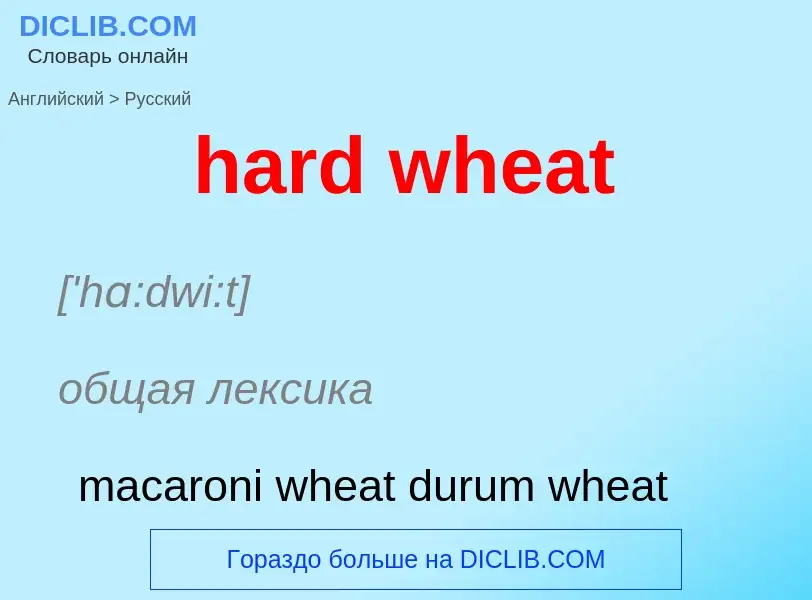Vertaling en analyse van woorden door kunstmatige intelligentie ChatGPT
Op deze pagina kunt u een gedetailleerde analyse krijgen van een woord of zin, geproduceerd met behulp van de beste kunstmatige intelligentietechnologie tot nu toe:
- hoe het woord wordt gebruikt
- gebruiksfrequentie
- het wordt vaker gebruikt in mondelinge of schriftelijke toespraken
- opties voor woordvertaling
- Gebruiksvoorbeelden (meerdere zinnen met vertaling)
- etymologie
durum wheat - vertaling naar Engels
['hɑ:dwi:t]
общая лексика
macaroni wheat durum wheat
твёрдая пшеница
['dju:rəm'wi:t]
общая лексика
пшеница твёрдая (Triticum durum)
ботаника
твёрдая пшеница (Triticum durum)
твёрдая пшеница
общая лексика
rivet wheat cone wheat
Definitie
Wikipedia

Durum wheat (), also called pasta wheat or macaroni wheat (Triticum durum or Triticum turgidum subsp. durum), is a tetraploid species of wheat. It is the second most cultivated species of wheat after common wheat, although it represents only 5% to 8% of global wheat production. It was developed by artificial selection of the domesticated emmer wheat strains formerly grown in Central Europe and the Near East around 7000 BC, which developed a naked, free-threshing form. Like emmer, durum wheat is awned (with bristles). It is the predominant wheat that grows in the Middle East.
Durum in Latin means "hard", and the species is the hardest of all wheats. This refers to the resistance of the grain to milling, in particular of the starchy endosperm, implying dough made from its flour is weak or "soft". This makes durum favorable for semolina and pasta and less practical for flour, which requires more work than with hexaploid wheats like common bread wheats. Despite its high protein content, durum is not a strong wheat in the sense of giving strength to dough through the formation of a gluten network. Durum contains 27% extractable wet gluten, about 3% higher than in common wheat (T. aestivum L.).


